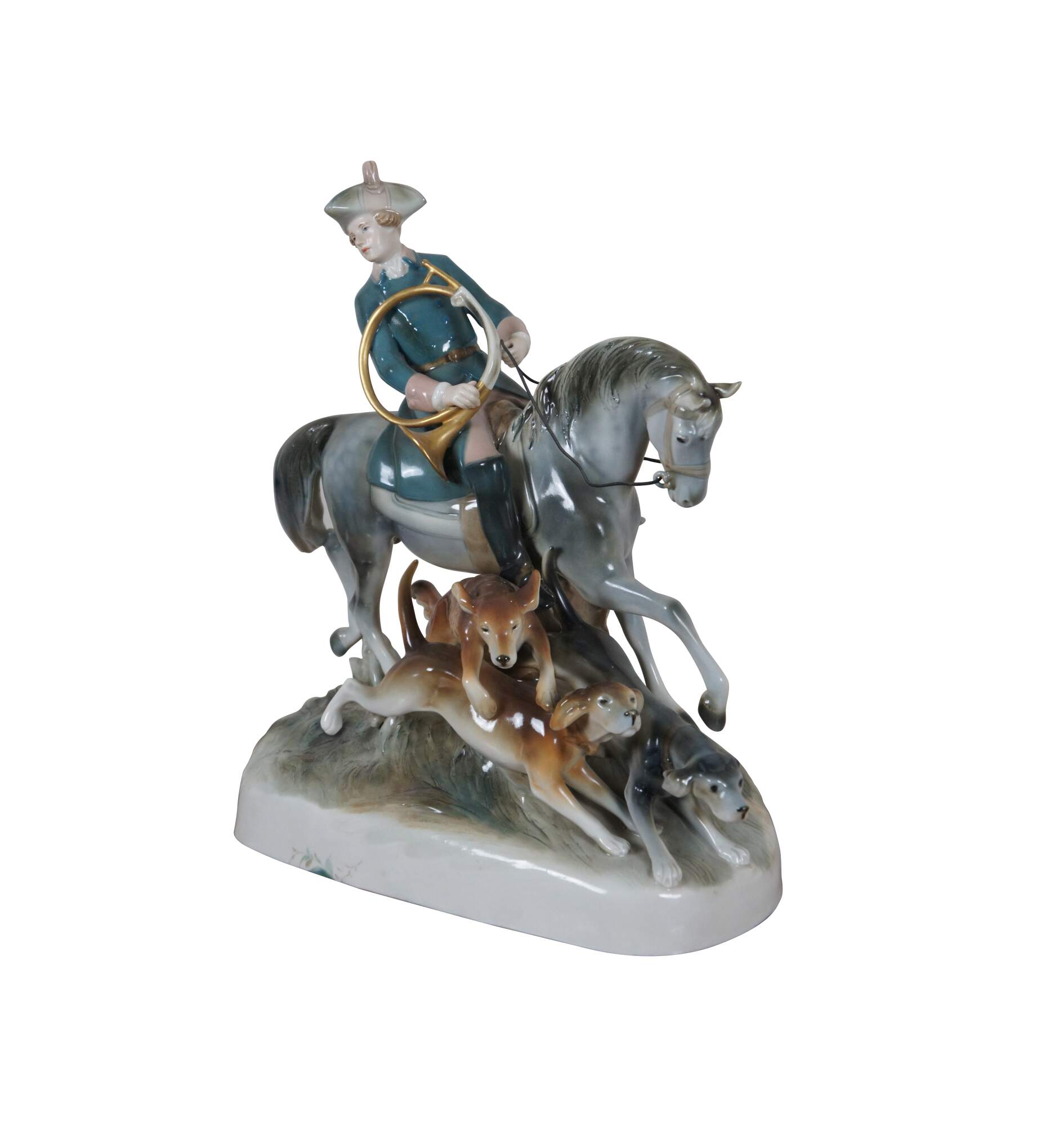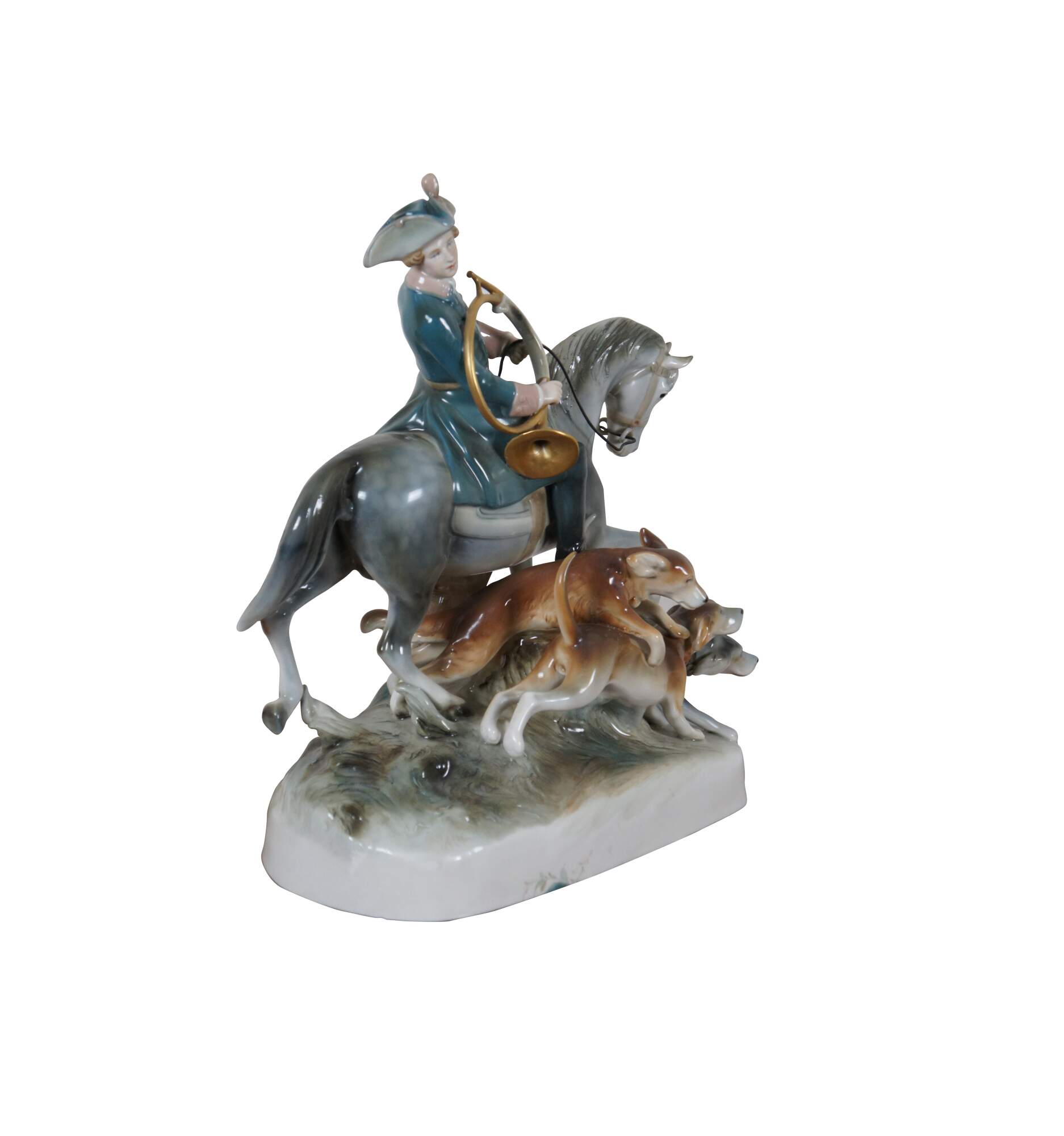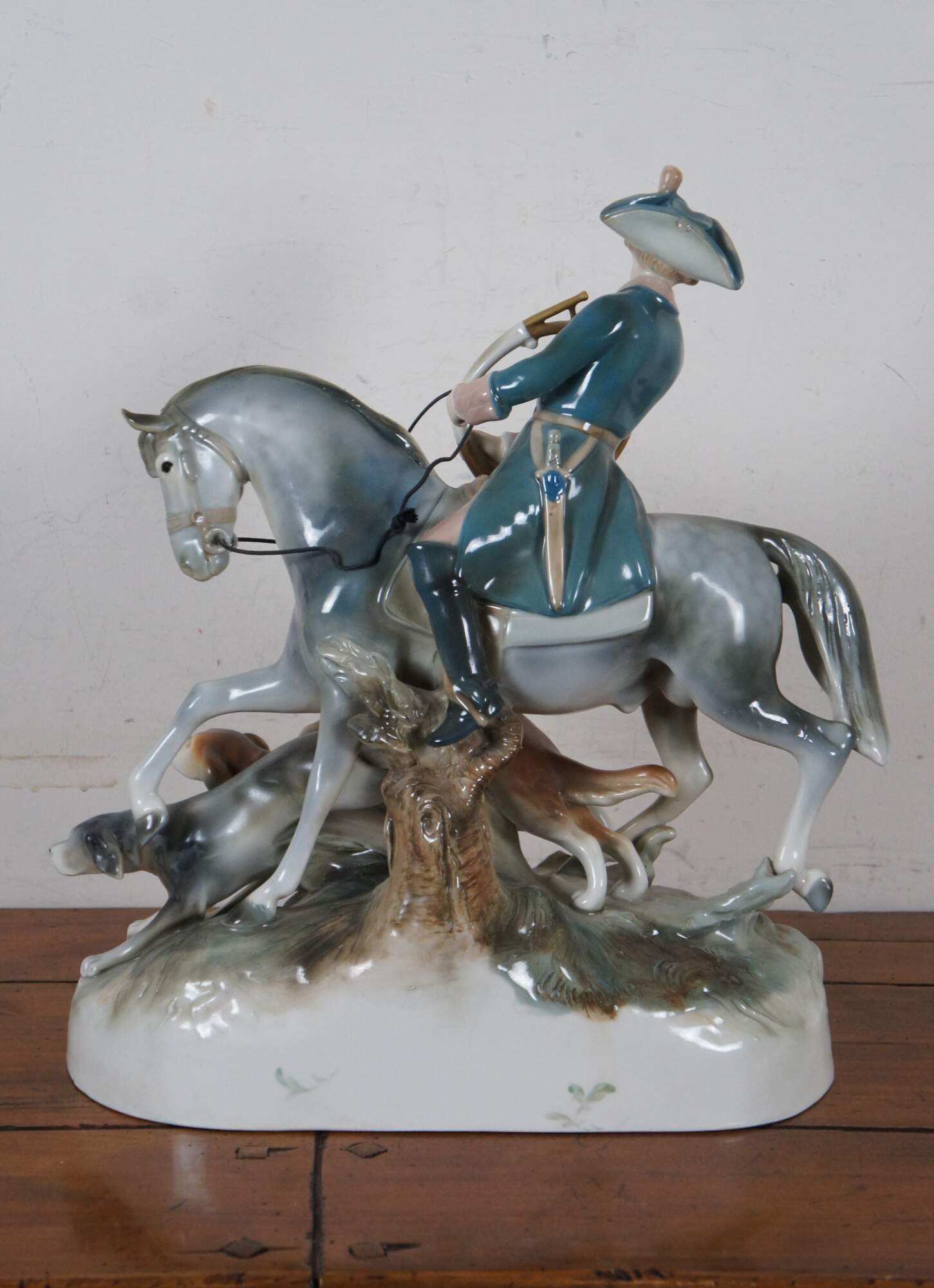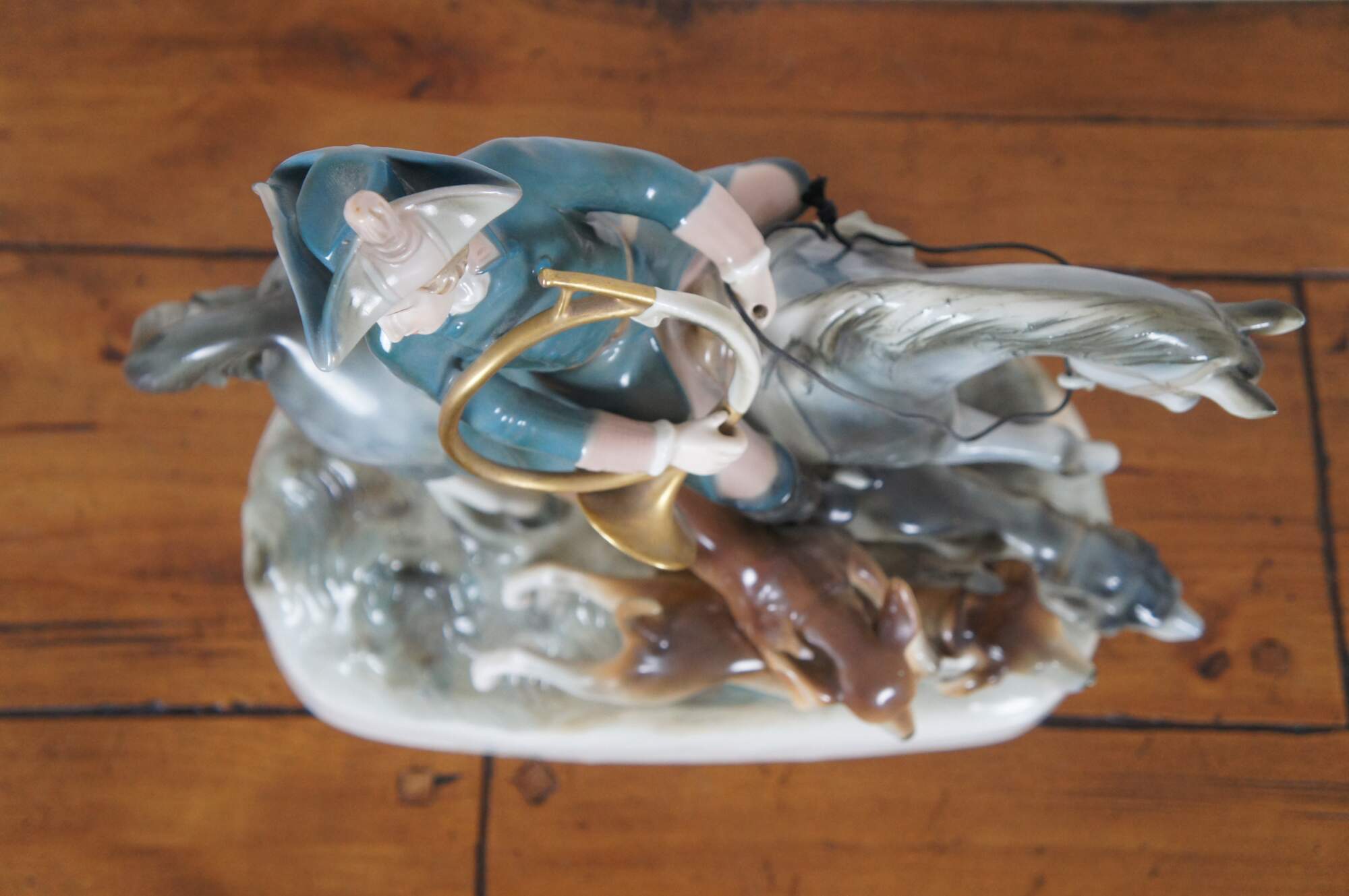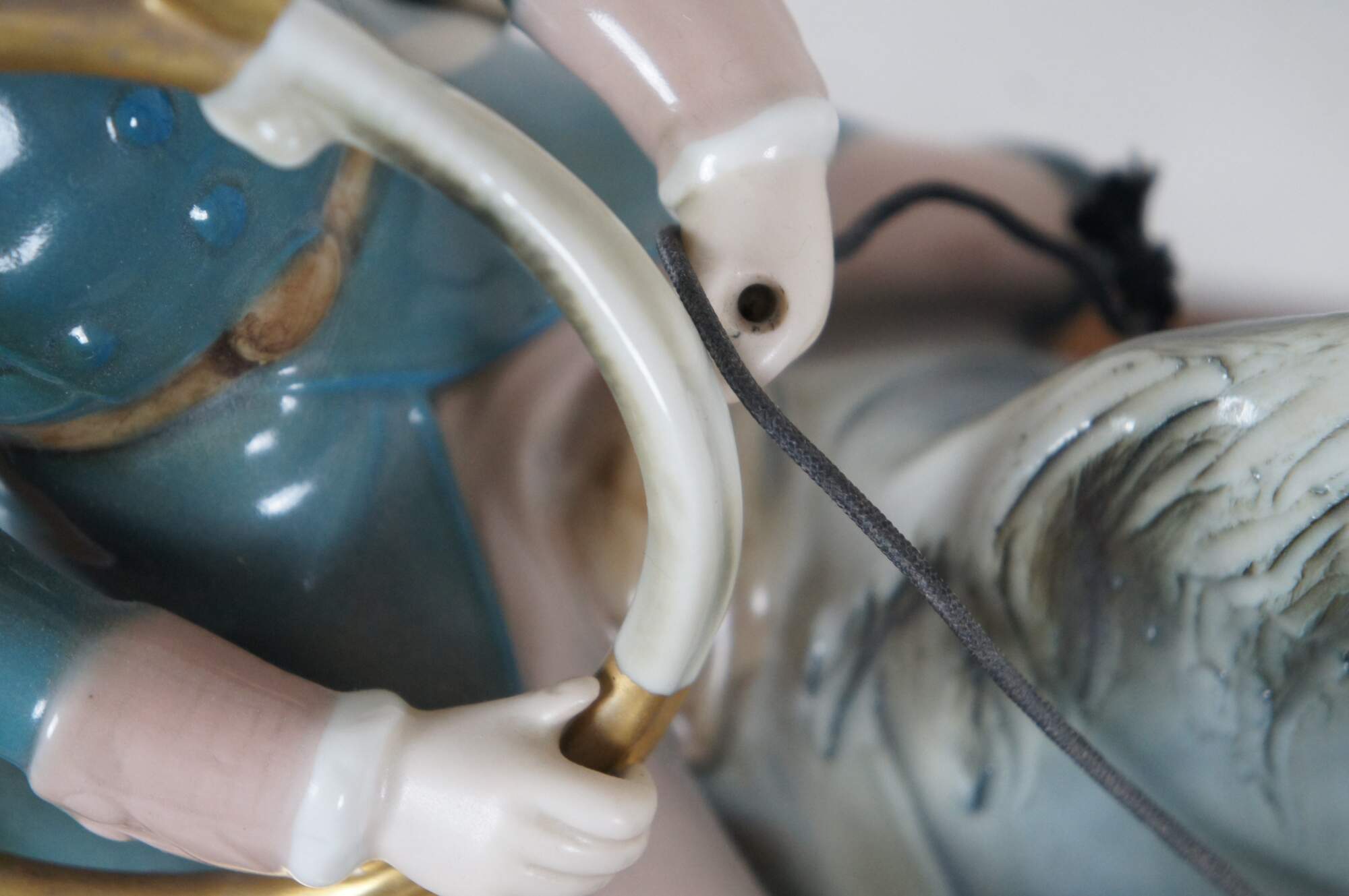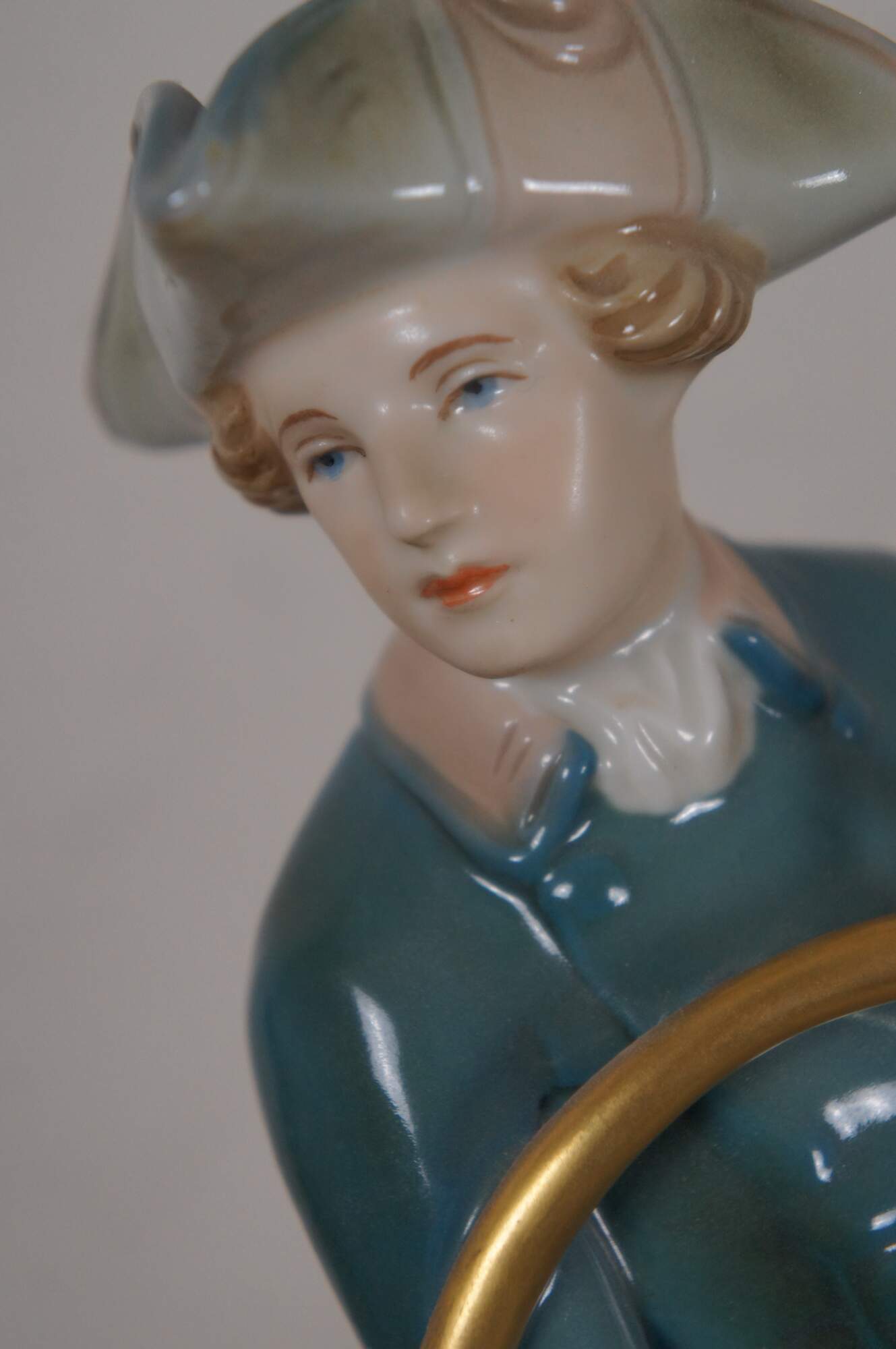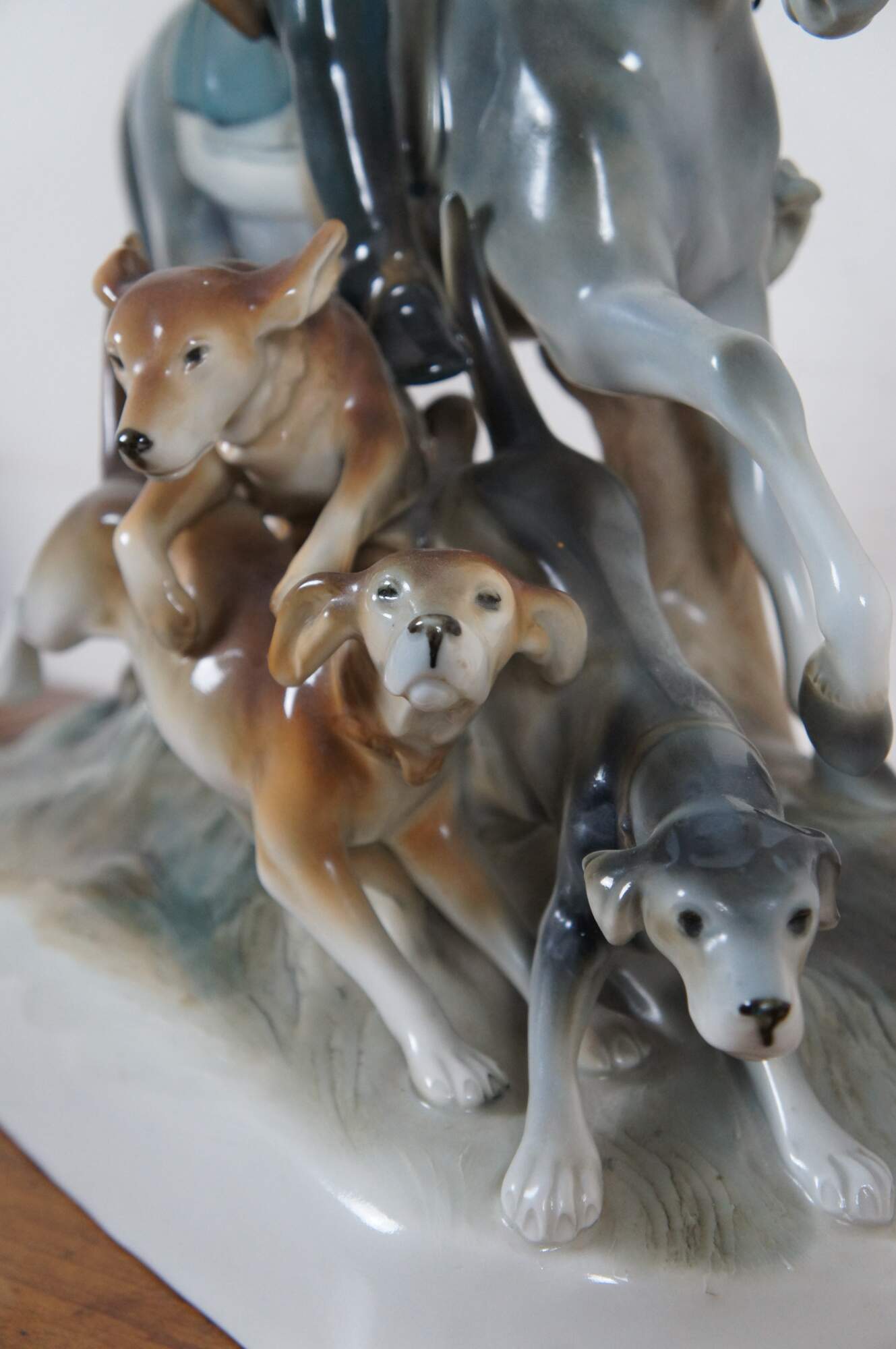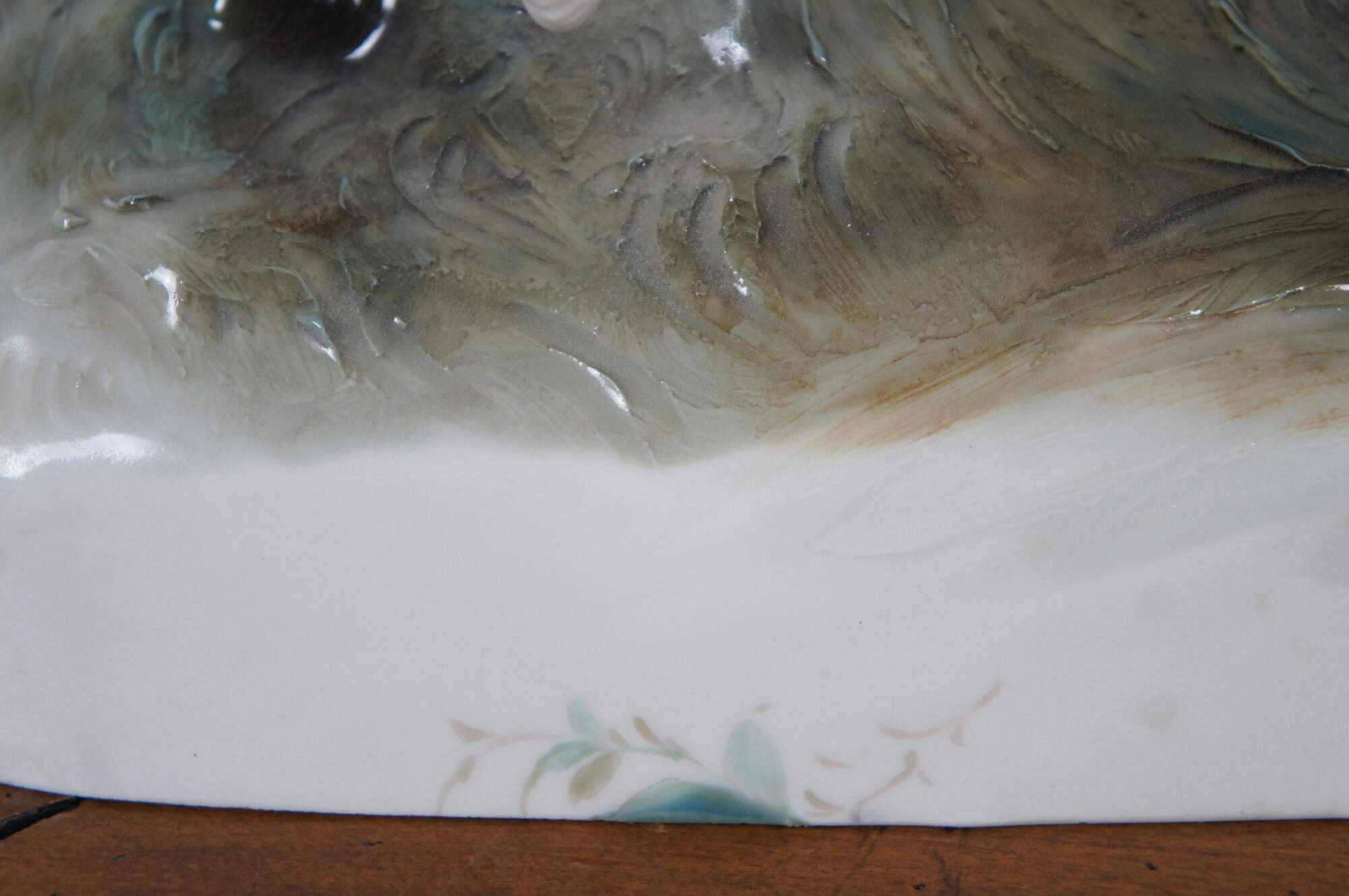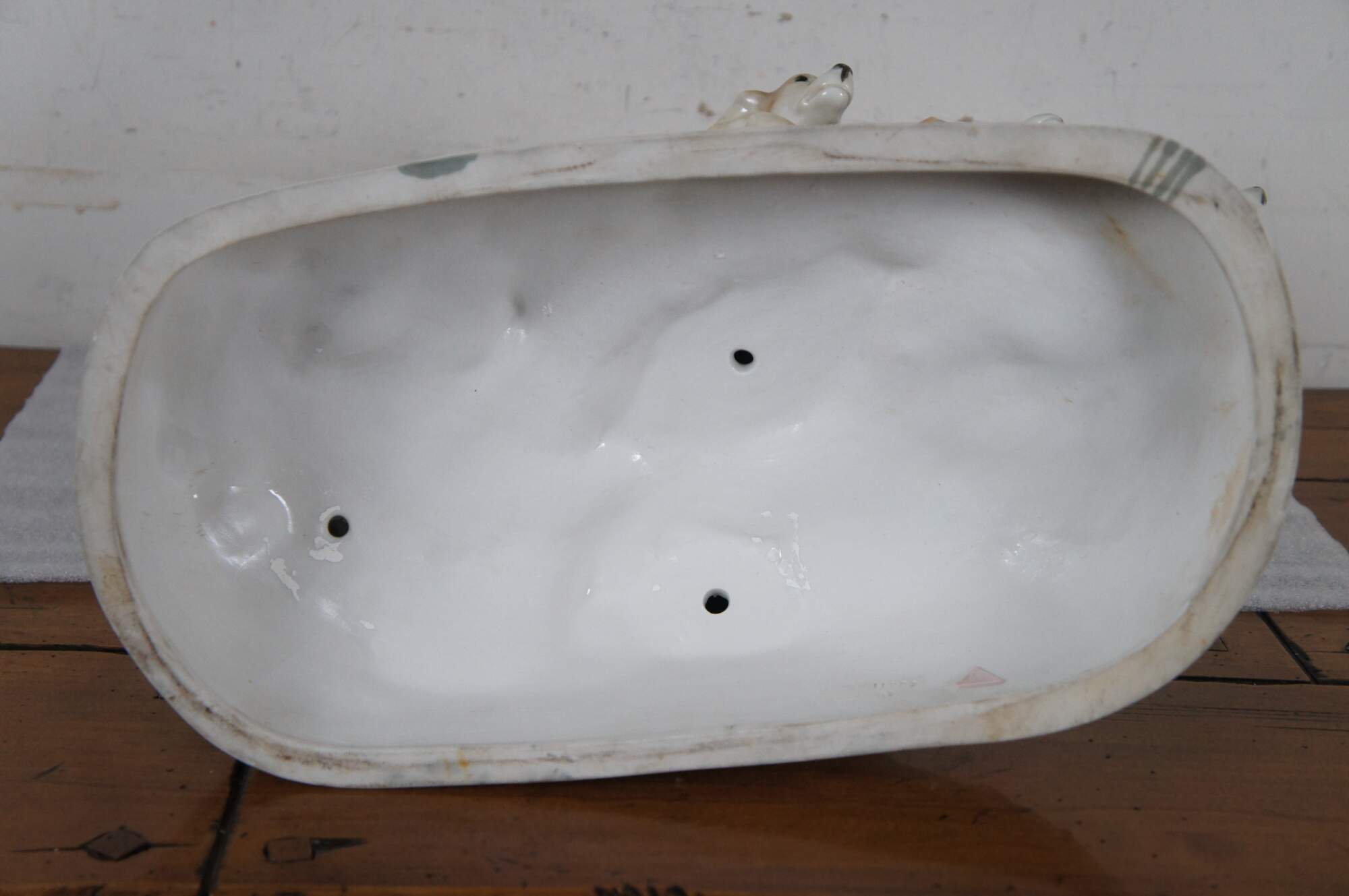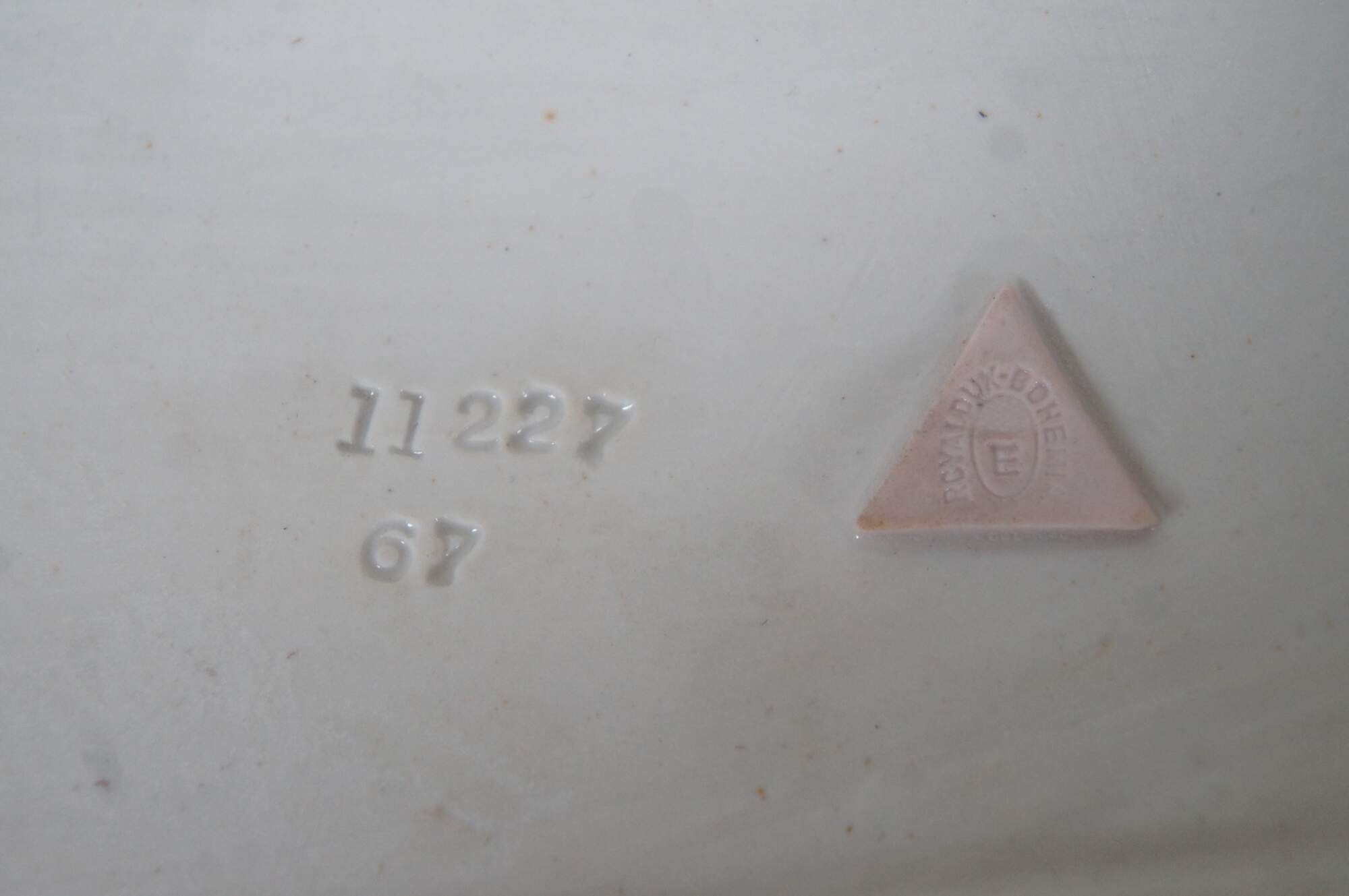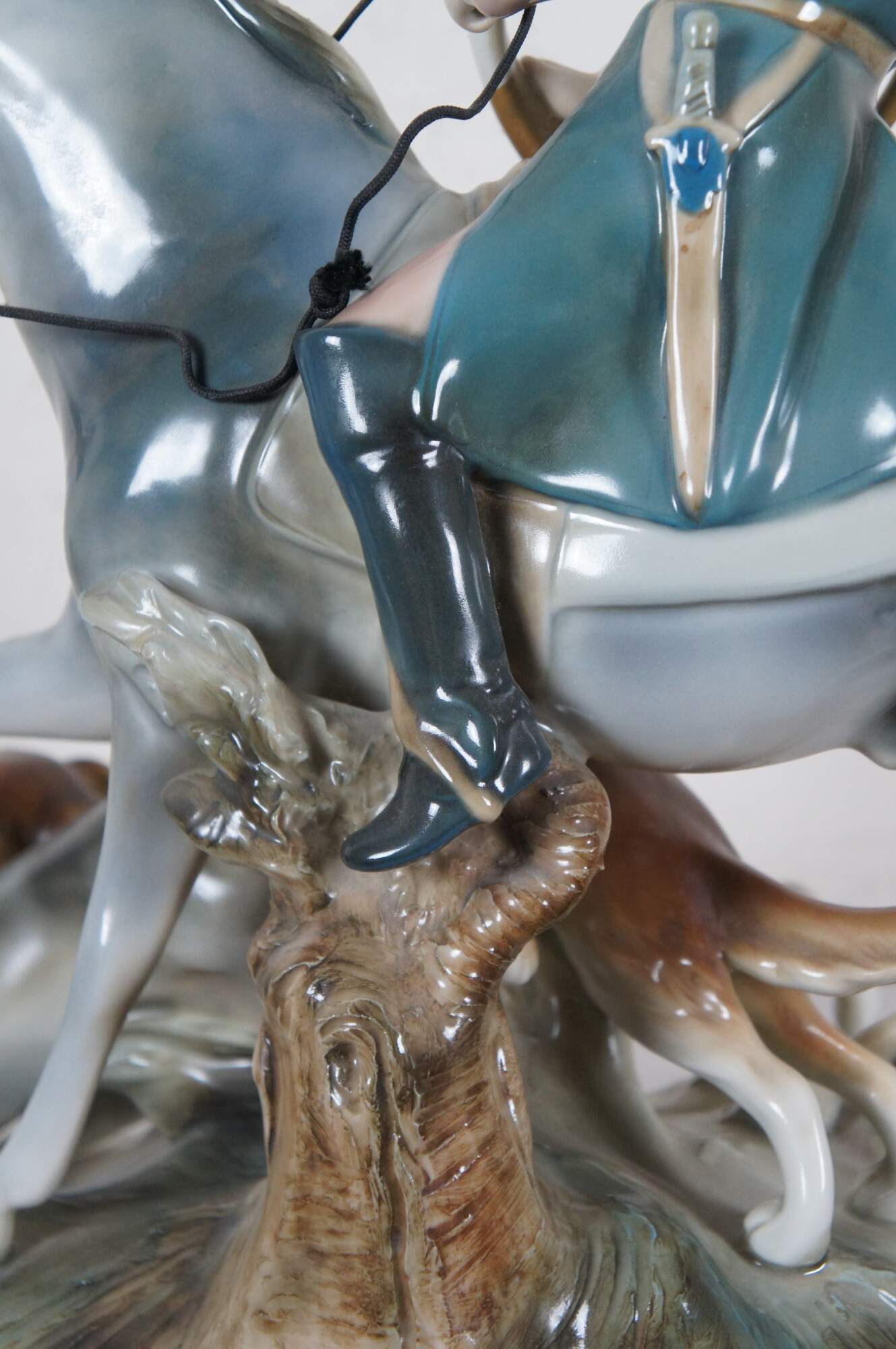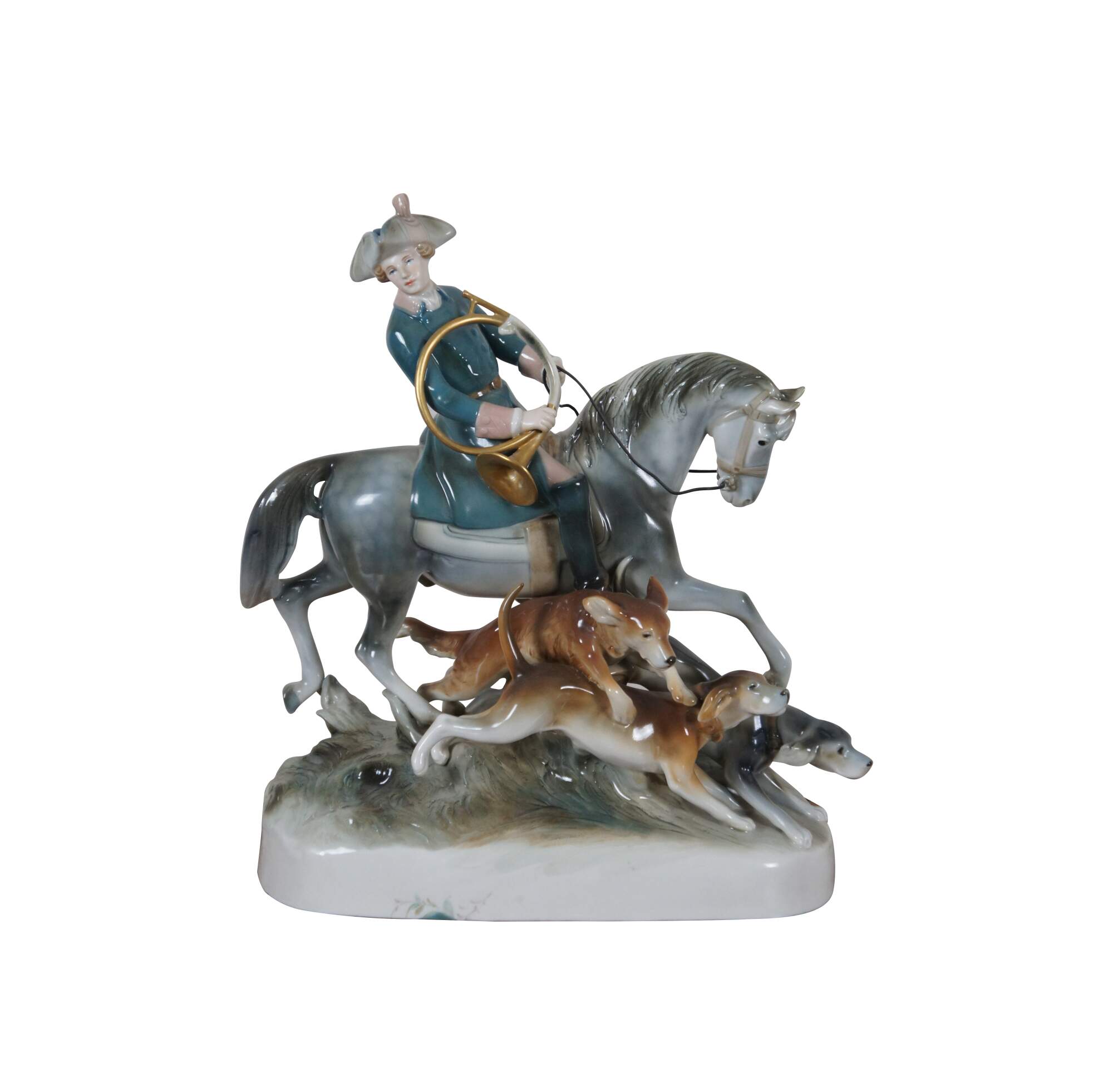
Royal Dux Bohemia Porcelain Equestrian Huntsman Fox Hunt Horse Dog Sculpture 20"
$1,600.00
Shipping:
Free Shipping Included
Delivery:
Estimated 2-15 Business Days
Payments:
Credit Card, Check, Cash, PayPal, Apple Pay, Venmo
Returns:
30 Days 100% Money Back Guarantee, Buyer Pays Return Shipping
Description
Large vintage Royal Dux Czech porcelain fox hunt sculpture showing an 18th century colonial huntsman, carrying a French horn and wearing a sword, riding alongside a trio of hunting dogs. Marked on the base with the incised numbers 11227 67 and the raised pink triangle mark of Royal Dux.
""Among the first porcelain manufacturers in West Bohemia, the factory in Duchcov (Dux) was founded in the year 1853. After the first timid attempts with producing utility ceramics goods from of raw materials mined in the closest surroundings, the factory was bought by the experienced model-drawer Eduard Eichler and turned into the firm E.Eichler Thonwaren-Fabrik. In 1862 he also bought the small factory in Šelty near Česká Lípa. The manufactury experienced a period of prosperity and the goods produced here were mainly from terracota, faience and majolica in the genre of Copenhagen, Worcester and Sevrés . In 1878 the Eichler firm was awarded Silver Medal at the exhibition in Paris.
At the turn of the 19th and 20th century a number of important changes occured. The factory reinforced its capital through the transformation of Eduard Eichler’s private property into a stock-holding company which in 1898 became to be known as Duxer Porzellan – Manufaktur, A-G. With the seat in Berlin. This newly established company bought the porcelain factory in Blankenhain near Weimar and the factory in Šelty was liquidated.
The manufactury started to produce, apart from the traditional products, also porcelain. Since 1900 it has been using its traditional trade mark – made from rose - colored material in the form of a triangle with the inscription ROYAL DUX BOHEMIA and an acorn. This trade mark is still used up to this day.
In the Vienna Secession period the manufaktury achieved most remarkable successes thanks to its model-designer Alois Hampel. Some of the articles introduced at that time have been produced up to these days. The factory was awarded the Grand Prix prize at the world exhibition in St. Louis in 1904, silver medal at the exhibition in Milano in 1906 and the gold medal at the exhibition in Liberec. It employed 500 workers and consisted of five round and seventeen muffle kilns, it had its own steam and power plant. The factory had its own sample store-houses and representatives in Berlin, Hamburg, Vienna, London, Amsterdam, Bologne, Paris, Stockholm and Madrid. The products were mainly exported and the manufactury had trade connections with all Europe, including Russia and even with North America. This successful period was interrupted by war. Because of the specific character of produced goods the pre-war standard of production could not be maintained. Due to enormous financial difficulties the factory in Blankenhain had to be sold in 1918.
In the period between the two world wars the manufactury didn’t succeed in achieving a level production that could be compared with that of the beginning of the century. The trade links had been destroyed during the war and they could not be re-established any more. The necessary financial means for art design were missing. When the world economic crisis broke out the factory was obliged to stop developing new lines and it was even difficult to maintain the achieved standard. In spite of all these difficulties the manufactury managed to preserve the character of its production. It continued to produce figurative and decorative porcelain based upon already existing successful and shapes.
After the Second World War most of the workers of German nationality were evacuated. They were replaced by settlers from the interior of the country, the factory established its own apprentice-training center and the State School of Ceramics in Teplice was re-opened.
The cooperation with the High Industrial Art School in Prague also largely contributed to its further development and helped to retain the enormous scope of production.
Since the late fifties manufactury of Duchcov has started to regain its lost position on the world markets. The collection of Prof. Jaroslav Ježek, show at the world exhibition EXPO ’58 in Brussels largely contributed to its success. The production collection is further extended both by realistic figurative motives and by products , characteristic for their smooth stylized forms in modern spirit, both in figurative and decorative porcelain.
The variety and wide scope of the contemporary production program will please even the most demanding customer. The manufactury strives to satisfy the maximum number of its customers by retaining a high artistic, aesthetic and technological standard of its production. The newly appearing catalogue of figurative and decorative porcelain, known in his country, as well as abroad, under the trade mark ROYAL DUX BOHEMIA as a proof of these realities.
In 1992, the name of the manufactory of Duchcov was changed to Porcelain Manufactory Royal Dux Bohemia a.s., and became an independent joint stock company again till the year 1997, when it became a member of the Czech Porcelain Group in the frame of capital putting-through.""
Condition
Very Good - Missing staff in hand
Dimensions
17” x 9” x 19.5” (Width x Depth x Height)
